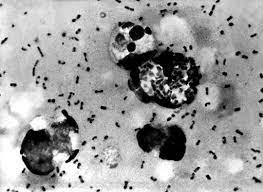Bubonic Plague : China Reported Two Cases

China’s northern region of Inner Mongolia recently reported two cases of bubonic plague.
- Plague is an infectious disease caused by a specific type of bacterium called Yersinia pestis.
- pestis can affect humans and animals and is spread mainly by fleas.
- Bubonic plague, also known as Black Death, is one type of plague. It gets its name from the swollen lymph nodes (buboes) caused by the disease.
- The other types of plague are:
- Septicaemic plague, which happens when the infection goes all through the body.
- Pneumonic plague, which happens when the lungs are infected.
- Symptoms: Bubonic plague symptoms include
- Sudden high fever and chills.
- Pains in the areas of the abdomen, arms and legs.
- Headaches.
- Large and swollen lumps in the lymph nodes (buboes) that develop and leak pus.
- Transmission:
- pestis is spread mostly by fleas on rodents and other animals.
- It is transmitted between animals and humans by the bite of infected fleas, direct contact with infected tissues, and inhalation of infected respiratory droplets.
- It’s an example of a disease that can spread between animals and people (a zoonotic disease).
- Treatment:
- It can be treated and cured with antibiotics.
- Antibiotics that treat bubonic plague include Ciprofloxacin, levofloxacin, moxifloxacin, Gentamicin and Doxycycline.




